Table of Contents
Plot
Welcome to The Mandalorian S1 E2 Review. The episode picks up immediately after the events of the first episode. The Mandalorian, also referred to as Din Djarin, is seen walking back to his ship, the Razor Crest, carrying a mysterious floating crib-like container. Upon entering his ship, he discovers that the container holds a small, green-skinned child of the same species as the legendary Jedi Master Yoda. This child, often referred to as “The Child” or “Baby Yoda” by fans, possesses strong Force sensitivity.
Din Djarin returns to the planet Nevarro with his valuable bounty, but he is met with tension from his fellow bounty hunters who are envious of his successful mission. He delivers the Child to the enigmatic and well-connected Client (played by Werner Herzog). The Client is fascinated by the Child’s abilities and instructs his scientist associate, Dr. Pershing (played by Omid Abtahi), to examine the Child’s blood.
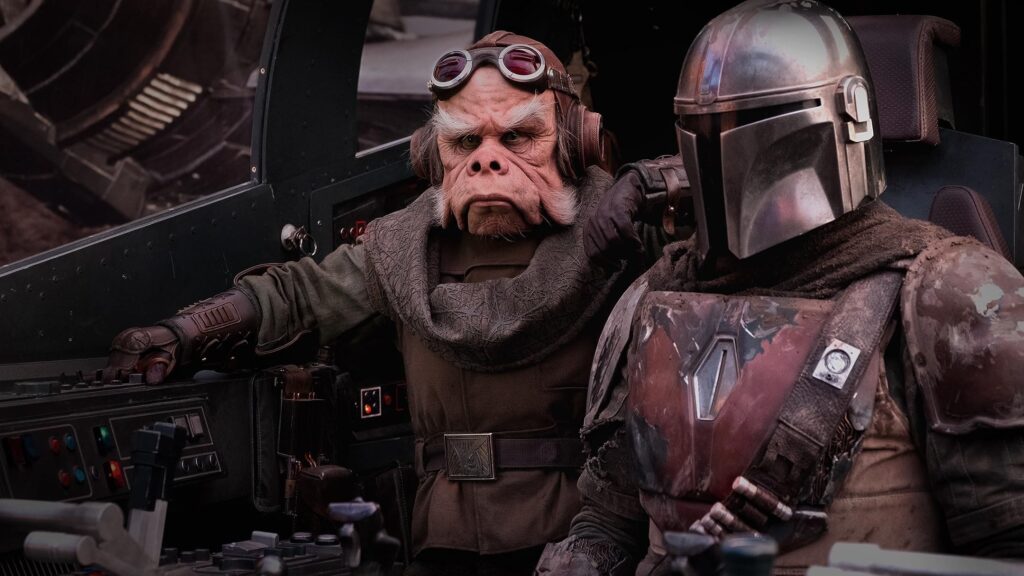
Feeling a sense of unease about the Child’s fate, Din Djarin decides to rescue the Child from the clutches of the Client. He enlists the help of Kuiil (played by Nick Nolte), an Ugnaught farmer he met in the previous episode. Kuiil assists him in finding the Client’s base and devising a plan to infiltrate it.
Din Djarin and Kuiil approach the Client’s base, where they find stormtroopers guarding the area. They successfully infiltrate the facility, encountering minimal resistance due to Din Djarin’s impressive combat skills. Eventually, they locate the Child, who is held in a laboratory by Dr. Pershing.
Upon seeing the conditions the Child is kept in, Din Djarin becomes determined to rescue him. A firefight ensues between Din Djarin and the stormtroopers, with Kuiil providing support from a distance. During the chaos, the Child demonstrates his Force abilities, helping Din Djarin defeat the remaining stormtroopers.
After the battle, Din Djarin and the Child escape on speeder bikes. They are pursued by more stormtroopers on bikes, but they manage to defeat them by using various tactics. In the process, the Child displays his Force abilities once again, stopping a charging Mudhorn creature with the Force when it threatens Din Djarin.
The episode ends with Din Djarin realizing that he is now responsible for the well-being of the Child. He decides to protect and care for the Child, defying the bounty hunter’s code and putting himself in conflict with other bounty hunters and the remnants of the Galactic Empire.
character development
1. Attachment and Morality: The episode opens with Din Djarin delivering the Child to the Client, as per his bounty hunting assignment. However, his interactions with the Child in the previous episode have already sparked a sense of attachment and protectiveness. This inner conflict becomes more pronounced as he witnesses the Child’s vulnerability and the callousness of the Empire’s agents. This situation challenges his morality and the “this is the way” mentality of his Mandalorian creed.
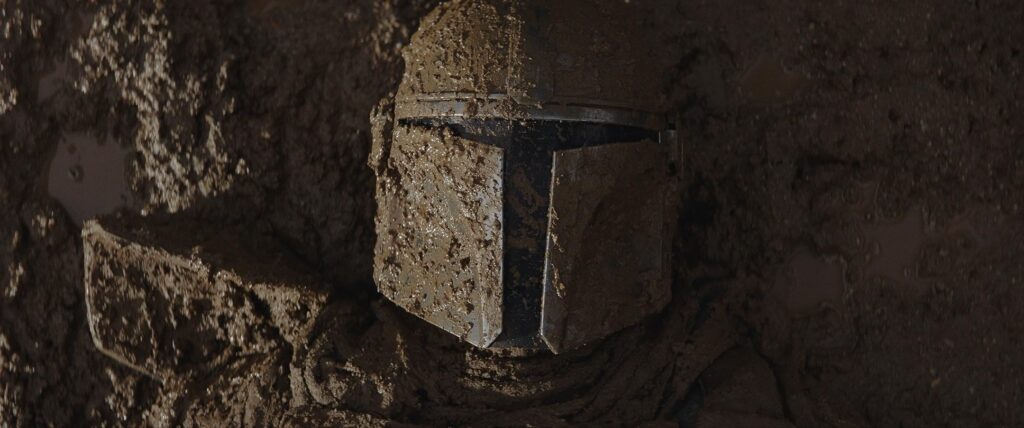
2. Caring for the Child: Din Djarin’s protective instincts kick in when he decides to rescue the Child from the Client’s possession. This decision signifies a shift in his character’s priorities, as he chooses to prioritize the well-being of the Child over following strict bounty hunter codes. This choice marks the beginning of his transformation from a detached bounty hunter to a reluctant caregiver.
3. Allies and Relationships: Throughout the episode, Din Djarin’s interactions with Kuiil, the Ugnaught farmer, play a significant role in his character development. Kuiil offers him insight and wisdom about the nature of droids, as well as perspectives on life and responsibility. Through his conversations with Kuiil, Din Djarin’s viewpoint begins to evolve, and he starts to question his own beliefs.
4. Conflict and Sacrifice: The episode showcases Din Djarin’s combat prowess and resourcefulness as he fights his way through the stormtrooper guards to rescue the Child. His willingness to engage in intense battles highlights his dedication to the Child’s safety, even if it means risking his own life. This emphasizes his growing attachment and the lengths he’s willing to go to protect the Child.
5. Force Sensitivity: The Child’s Force-sensitive abilities further challenge Din Djarin’s understanding of the galaxy. Witnessing the Child’s use of the Force to halt the charging Mudhorn surprises and intrigues him. This encounter introduces the concept of the Force more deeply into the story, potentially foreshadowing its significance in the Mandalorian’s journey.
6. Final Decision: By the end of the episode, Din Djarin solidifies his commitment to the Child. His decision to leave the bounty hunter guild’s emblematic signet behind on Nevarro signifies his departure from the strict code he once adhered to. He decides to take on the role of a protector and guardian for the Child, showcasing his transformation from a lone hunter to a figure of responsibility and care.
In summary, “Chapter 2: The Child” showcases Din Djarin’s character development as he grapples with moral dilemmas, experiences a growing attachment to the Child, forges unexpected relationships, and ultimately makes a significant decision that shapes the trajectory of his journey. The episode sets the stage for the transformation of the Mandalorian from a stoic bounty hunter to a more complex and compassionate figure, all while exploring themes of responsibility, attachment, and the influence of morality in a harsh and unforgiving galaxy.
Visual effects and cinematography
Visual Effects:
1. Practical Effects and Puppets: One of the standout aspects of “The Mandalorian” is its blend of practical effects and modern technology. The use of physical puppets, animatronics, and practical creature effects, like the Child and the Mudhorn, adds a tactile and tangible quality to the show’s visuals. The Child’s expressive movements and the realistic creature interactions contribute to the authenticity of the world.

2. CGI Integration: The episode seamlessly integrates CGI effects with the practical elements. CGI is used to enhance various scenes, such as the speeder bike chase and the blaster battles. The transitions between practical and CGI elements are well-executed, creating a cohesive and believable visual experience.
3. Spacecraft and Environments: The Razor Crest, Din Djarin’s ship, is intricately detailed with a mix of practical and digital effects, giving it a gritty and lived-in appearance. The various planets and environments in the episode showcase a range of visual styles, from the barren wastelands of Nevarro to the lush forests where the Mudhorn resides.
Cinematography:
1. Western Influence: The cinematography of “The Mandalorian” is heavily influenced by classic Western films, and this episode is no exception. Wide shots of the desert landscape and barren plains evoke a sense of isolation and desolation, reminiscent of the American frontier. The framing and camera angles often mirror those seen in Westerns, emphasizing the lone gunslinger motif.
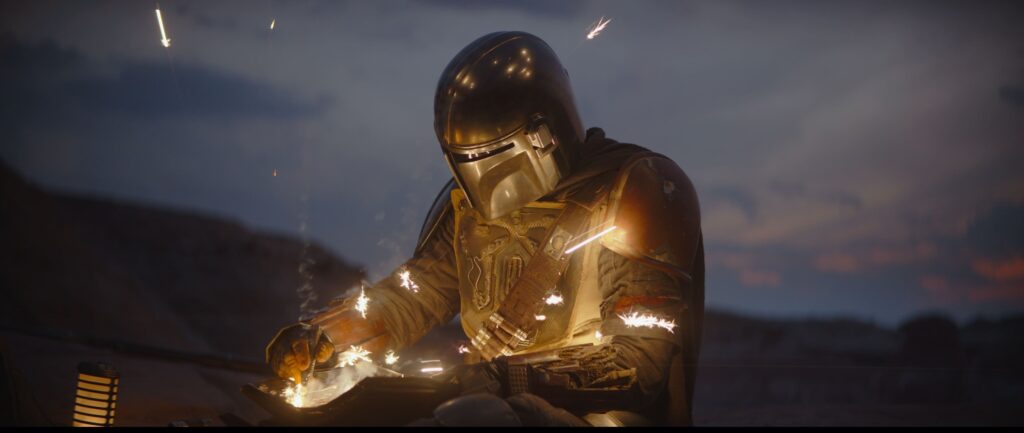
2. Character Focus: The camera work often centers on the characters’ expressions and body language, conveying emotions without relying on dialogue. This technique is especially prominent in scenes involving the Mandalorian and the Child, as their interactions are crucial to the episode’s emotional impact.
3. Action Sequences: The action sequences are skillfully choreographed and shot. The speeder bike chase through the desert showcases dynamic camera movements and fast cuts, intensifying the thrill of the pursuit. The battle against the Mudhorn is shot with a mix of close-ups and wide shots, capturing the tension and scale of the confrontation.
4. Use of Lighting: The episode’s lighting contributes to the atmosphere. The dimly lit interiors of the Client’s base contrast with the harsh exterior lighting, creating a sense of mystery and danger. Additionally, the use of natural lighting during the outdoor scenes helps establish the unique visual tone of the series.
5. Subdued Color Palette: The color palette remains relatively subdued, with earthy tones dominating the landscapes and settings. This color choice enhances the gritty and grounded nature of the series, while also emphasizing the contrast between the Mandalorian’s armor and the environments.
6. Symbolism and Composition: The Mandalorian’s armor, with its reflective surface, is often used to show the surroundings and characters, emphasizing his observational and vigilant nature. The composition of shots frequently draws attention to details like weapons, helmets, and gestures, underscoring character dynamics and relationships.
World-building
Planet Nevarro and the Client’s Base:
The episode primarily takes place on the planet Nevarro, a remote and desolate world located in the outer rim of the galaxy. Nevarro is characterized by its rugged terrain, rocky canyons, and harsh climate. The establishment of Nevarro as a location contributes to the “frontier” vibe that the series often evokes, resembling the setting of classic Westerns.
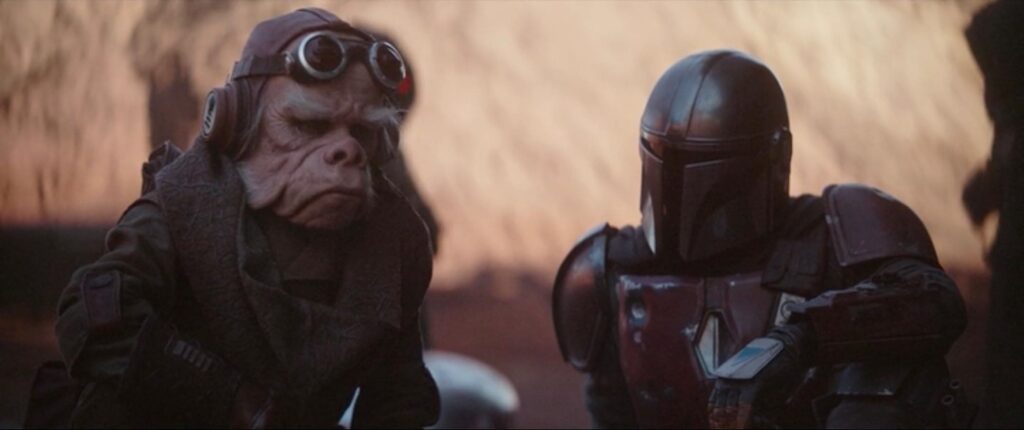
1. The Client’s Base: The Client’s base on Nevarro serves as a hub of intrigue and danger. The base’s interiors are dimly lit, evoking a sense of secrecy and mystery. The presence of stormtroopers and imperial symbols harkens back to the remnants of the Galactic Empire and the struggle for power in the aftermath of its fall.
Ugnaught Farmer Kuiil:
The introduction of the character Kuiil, an Ugnaught farmer, adds depth to the world of “The Mandalorian.” Kuiil resides on Nevarro and possesses valuable knowledge about the planet’s landscapes and ecosystems. He also provides insight into the struggles faced by individuals living on the outer rim. Kuiil’s role showcases the diversity of species and professions that exist within this galactic setting.
The Child and the Force:
The Child’s presence continues to unravel the mysteries of the Star Wars universe and its connection to the Force. The Child belongs to the same species as Yoda, a legendary Jedi Master, but little is known about their species. The episode further expands the idea that the Force-sensitive individuals are exceedingly rare and their abilities are a source of fascination and power.
Bounty Hunter Guild and Mandalorian Creed:
The episode delves into the inner workings of the bounty hunter guild. This secret society enforces a strict code of conduct among its members. The Mandalorian’s interactions with his fellow bounty hunters underscore the competitive and often ruthless nature of this profession. The Mandalorian’s decision to prioritize the Child’s well-being over the guild’s directives demonstrates his departure from their cold and detached approach.
Spacecraft and Technology:
The Razor Crest, the Mandalorian’s ship, is another element of world-building. The ship’s interior and exterior design offer insights into the technology of the era. The blend of worn, lived-in aesthetics with futuristic elements creates a unique visual style that’s consistent with the franchise’s overall universe.
Imperial Remnants:
Throughout the episode, the presence of stormtroopers and imperial insignia alludes to the remnants of the Galactic Empire. The fall of the Empire has led to power vacuums and struggles for control, which is a recurring theme in the Star Wars galaxy.
Wildlife and Environments:
The episode showcases diverse environments on Nevarro, from rocky canyons to lush forests. The introduction of the Mudhorn creature highlights the dangerous wildlife that inhabits these remote regions, providing additional challenges for the characters.
In summary, “Chapter 2: The Child” enriches the world of “The Mandalorian” by introducing new characters, expanding on the complexities of the outer rim, offering insights into different professions and species, and deepening the exploration of the Force. The episode’s attention to detail in settings, characters, and lore contributes to the immersive storytelling that defines the Star Wars universe.
Action and direction
Action Sequences:
1. Speeder Bike Chase: The episode kicks off with an exhilarating speeder bike chase as the Mandalorian attempts to escape from rival bounty hunters. The fast-paced chase through the desert landscape is enhanced by dynamic camera movements, close-ups of the Mandalorian’s expressions, and quick cuts that convey a sense of urgency and excitement. The use of practical effects and CGI blend seamlessly to create a realistic and immersive chase sequence.
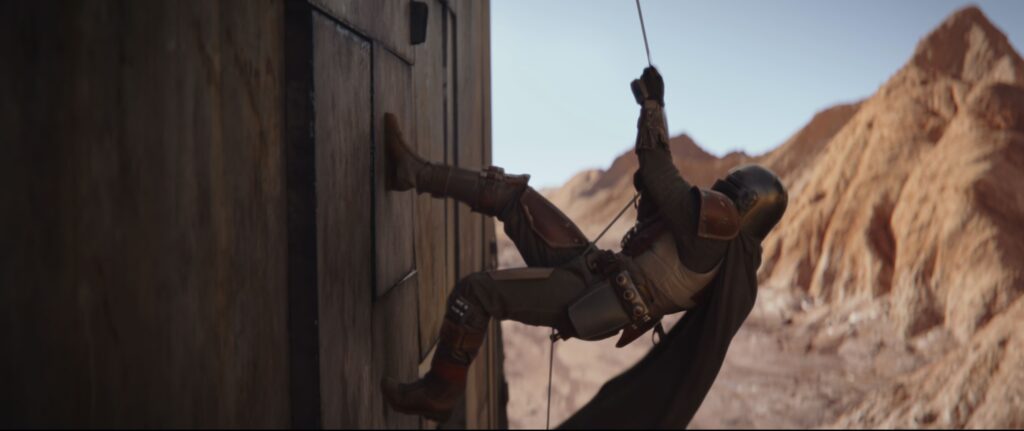
2. Infiltration of the Client’s Base: The Mandalorian’s infiltration of the Client’s base involves carefully planned actions and stealth maneuvers. The tension builds as he silently eliminates stormtroopers and navigates the dimly lit interiors. The use of shadows, low lighting, and close-ups contributes to the suspenseful atmosphere, highlighting the Mandalorian’s precision and combat skills.
3. Confrontation with the Mudhorn: The climactic battle against the Mudhorn is a standout action sequence. The Mandalorian’s struggle against the powerful creature showcases his resourcefulness and determination. The camera work alternates between wide shots that emphasize the scale of the fight and close-ups that highlight the Mandalorian’s expressions and the Mudhorn’s ferocity. The use of slow-motion during key moments adds to the dramatic impact of the battle.
4. The Child’s Force Abilities: The Child’s display of Force abilities during the fight with the Mudhorn is a pivotal moment. The camera captures the Mandalorian’s surprise and awe as the Child uses the Force to halt the creature’s charge. The slow, deliberate pacing of this moment contrasts with the frenetic action, creating a visually striking and emotionally resonant sequence.
Direction:
1. Pacing and Atmosphere: The director, Rick Famuyiwa, effectively establishes the episode’s pacing and atmosphere. The slower, more contemplative moments, such as the interactions between the Mandalorian and the Child, are juxtaposed with the intense action sequences. This balance creates a well-rounded narrative that allows for character development amidst the excitement.
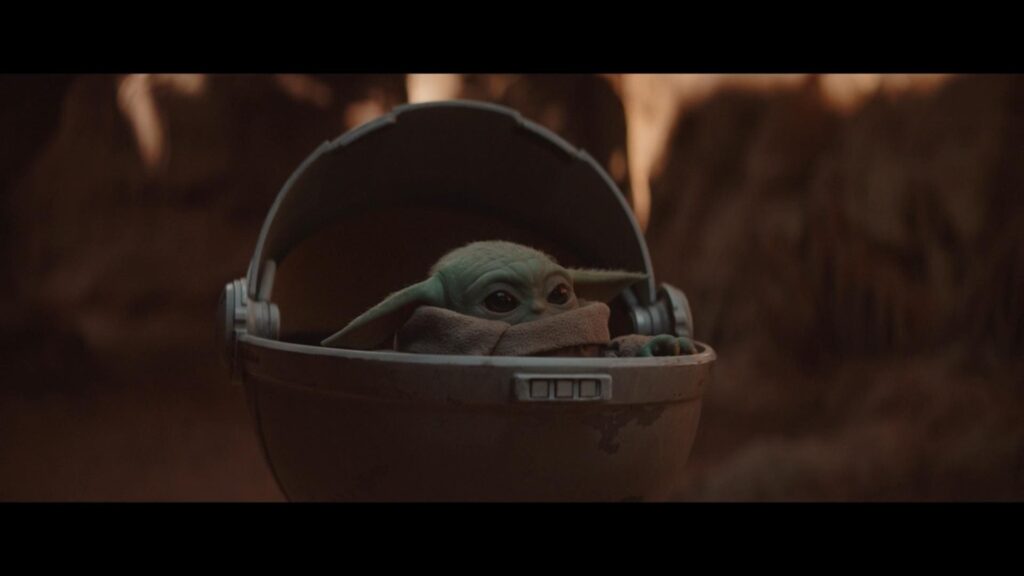
2. Character Dynamics: The director skillfully navigates the dynamics between the Mandalorian and other characters. The camaraderie that develops between the Mandalorian and Kuiil is conveyed through their dialogue and interactions, adding depth to their relationship. Similarly, the Mandalorian’s growing attachment to the Child is evident through his expressions and actions.
3. Visual Storytelling: The direction emphasizes visual storytelling, allowing facial expressions and body language to convey emotions without relying on excessive dialogue. This approach enhances the connection between the audience and the characters, especially the Mandalorian and the Child.
4. World-Building: The episode’s direction contributes to the expansion of the show’s world. The attention to detail in showcasing different environments, species, and technological elements enriches the viewers’ understanding of the Star Wars universe and its outer rim territories.
5. Foreshadowing: The episode’s direction incorporates subtle foreshadowing, such as the Child’s use of the Force. This hints at the potential significance of the Child’s abilities and sets up future plot developments.
Music and sound design
Music:
1. Main Theme and Motifs: The iconic main theme of “The Mandalorian,” with its Western-inspired instrumentation and rhythm, continues to set the tone for the series. In this episode, variations of the main theme are used to underscore moments of tension, action, and introspection. The theme’s repetition helps establish consistency across episodes while adapting to specific scenes.
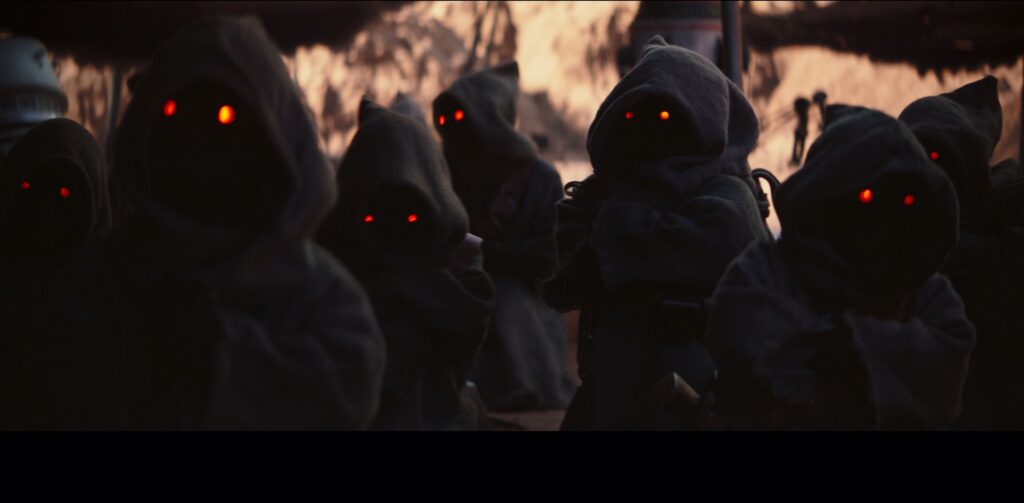
2. Character Themes: Ludwig Göransson employs motifs associated with characters, enriching the emotional depth of their journeys. The Child’s theme, characterized by delicate and mysterious tones, underscores the Child’s presence and the Mandalorian’s evolving relationship with the young Force-sensitive being.
3. Action and Tension: The episode’s action sequences are accentuated by rhythmic and pulsating music that heightens the excitement and urgency. The music seamlessly aligns with the pace and intensity of the action, adding layers of tension to scenes like the speeder bike chase and the confrontation with the Mudhorn.
4. Subtlety and Reflection: The score also showcases moments of subtlety and reflection. During quieter scenes, the music adopts a softer and more introspective tone, allowing for character development and emotional resonance. This balance between intense action and quieter moments contributes to the episode’s overall narrative flow.
Sound Design:
1. Environmental Sounds: The episode’s sound design captures the auditory textures of different environments. The sounds of desert winds, footsteps on various terrains, and the hum of machinery in the Client’s base contribute to the immersive world-building. The attention to environmental sounds enhances the viewers’ sense of being in the various locations.
2. Weapons and Combat: The sound effects during combat sequences are meticulously designed to match the unique weaponry and combat styles of the characters. The blaster shots, explosions, and clashing of weapons create a visceral and engaging audio experience that complements the visual action.
3. Creatures and Beasts: The sound design for creatures like the Mudhorn and the speeder bikes enhances their authenticity. The roar of the Mudhorn, for example, conveys its power and ferocity, while the speeder bikes’ engine sounds add to the intensity of the chase scenes.
4. Mandalorian Armor: The clinking and clanking of the Mandalorian’s beskar armor create a distinct auditory presence. These sounds reinforce the Mandalorian’s formidable presence and highlight the armor’s importance within the narrative.
5. The Force: The use of sound effects in conjunction with the Child’s display of Force abilities adds an ethereal quality to these moments. The gentle chimes and tones associated with the Child’s Force-sensitive actions emphasize the mystical nature of the Force.
In summary, the music and sound design in “Chapter 2: The Child” contribute to the immersive and cinematic quality of “The Mandalorian.” The music’s motifs, ranging from action-packed sequences to moments of reflection, enhance the emotional impact of the characters’ journeys. The meticulous sound design brings the Star Wars universe to life, capturing the intricacies of various environments, weapons, and creatures. Together, these elements elevate the episode’s storytelling and immerse the audience in the world of the series.
Pacing and episode structure
Opening Scene:
The episode starts immediately where the previous one left off, with the Mandalorian walking back to his ship with the Child. This seamless transition ensures continuity and keeps the audience engaged right from the start. The opening establishes the episode’s tone and sets the stage for the upcoming events.
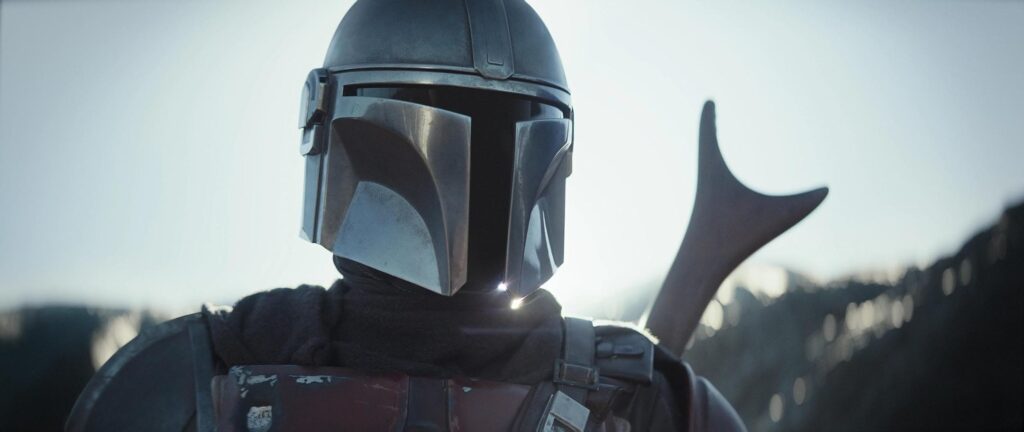
Character Interactions and Development:
The episode dedicates time to character interactions, particularly between the Mandalorian and Kuiil, the Ugnaught farmer. These moments help build the characters’ relationships and provide insights into their motivations and perspectives. The pacing slows down during these conversations, allowing for character development and emotional resonance.
Action and Tension:
The episode injects moments of action and tension at strategic points. The speeder bike chase early in the episode adds excitement and showcases the Mandalorian’s combat skills. The infiltration of the Client’s base ramps up the tension, with stealth and combat sequences driving the narrative forward.
Discovery and Mystery:
The episode maintains a sense of mystery and discovery surrounding the Child. As the Mandalorian investigates the Child’s origins and abilities, the pacing encourages viewers to speculate and engage with the unfolding narrative. The Mandalorian’s reactions and interactions with the Child contribute to the episode’s intrigue.
Climax:
The episode builds toward a climactic action sequence, which is the confrontation between the Mandalorian and the Mudhorn. This battle serves as a major turning point, showcasing the Mandalorian’s resourcefulness and the Child’s Force abilities. The suspenseful pacing leading up to this moment enhances its impact.
Emotional Resolution:
Following the climax, the episode takes a more reflective and emotional turn. The Mandalorian’s decision to protect the Child and his interactions with Kuiil demonstrate his evolving character arc. The pacing slows down as the characters’ emotions and motivations are explored in greater depth.
Final Scenes and Set-Up:
The episode concludes with scenes that both wrap up current storylines and set the stage for future developments. The visual of the Mandalorian leaving his bounty hunter guild emblem behind symbolizes his departure from his former way of life. This final moment, combined with the Mandalorian’s new mission to protect the Child, provides a sense of closure while leaving room for ongoing narrative threads.
Use of Flashbacks:
The episode features a brief flashback to the Mandalorian’s childhood, offering a glimpse into his traumatic past. This flashback is seamlessly woven into the narrative, providing insight into the Mandalorian’s character and motivations.
Episodic Structure with Serial Elements:
While the episode has its own self-contained narrative arc, it also contributes to the overarching narrative of the series. The episode’s structure strikes a balance between episodic storytelling and ongoing character development, encouraging viewers to engage with both individual episodes and the larger story.
In summary, “Chapter 2: The Child” maintains a well-paced structure that combines character development, action, and mystery. The pacing effectively engages the audience, allowing for emotional investment in the characters and their journeys. The episode’s strategic use of action, tension, and reflection ensures a dynamic viewing experience while contributing to the broader narrative of “The Mandalorian.”
Originality and innovation
Genre Blending:
1. Space Western Fusion: The episode maintains the unique genre fusion that defines “The Mandalorian” as a space Western. It seamlessly blends traditional Western elements, such as lone gunslinger tropes and frontier settings, with the space opera backdrop of the Star Wars universe. This fusion offers a fresh take on both genres and creates a distinct visual and narrative identity.
Character and World-Building:
1. Relatable Protagonist: The Mandalorian’s character defies the typical hero archetype. He’s a gritty and enigmatic anti-hero, challenging the conventions of a traditional protagonist. This nuanced characterization adds depth to the series and subverts expectations.
2. The Child’s Mystery: The introduction of the Child, a Force-sensitive creature of Yoda’s species, sparks curiosity and intrigue. This mystery allows the episode to explore uncharted territory within the Star Wars universe, offering fresh lore and potential storylines.
Visual and Audio Identity:
1. Visual Realism: The episode’s visual style and use of practical effects contribute to its realism. The gritty and lived-in look of the sets, costumes, and props sets it apart from other entries in the Star Wars saga. This unique visual identity enhances the immersive experience.
2. Distinctive Score: Ludwig Göransson’s musical score introduces an original theme that captures the essence of “The Mandalorian.” With its blend of Western motifs and electronic elements, the score adds a fresh sonic dimension to the Star Wars universe.
Narrative Exploration:
1. Outer Rim Exploration: “The Mandalorian” focuses on the outer rim of the galaxy, a relatively unexplored region in previous Star Wars media. This shift in perspective offers opportunities to delve into new cultures, characters, and conflicts that aren’t often explored in the main saga.
2. Character Depth and Transformation: The Mandalorian’s transformation from a stoic bounty hunter to a protective guardian subverts traditional character arcs. His willingness to defy his guild’s code showcases personal growth and challenges the expectations set for his character type.
Subverting Expectations:
1. Pacing and Atmosphere: The slower pacing and focus on character interactions subvert the expectation of constant action in a Star Wars series. This allows for deeper character exploration and emotional resonance.
2. Questioning Heroism: The Mandalorian’s decision to prioritize the Child’s well-being over the bounty hunting guild’s mission subverts the conventional hero narrative. This choice raises questions about heroism and challenges the notion of altruistic motives.
In summary, “Chapter 2: The Child” demonstrates originality and innovation through its genre-blending approach, unique character dynamics, visual style, and narrative exploration. By melding Western aesthetics with the space opera backdrop of Star Wars, the episode offers a fresh perspective on the galaxy far, far away, while also challenging established storytelling norms and expectations.
FAQs
What is the Mandalorian’s main goal in this episode?
The Mandalorian’s primary goal in this episode is to find shelter and safety for the child. He seeks refuge on a remote planet, hoping to avoid pursuit
What creatures does the Mandalorian encounter in this episode?
The Mandalorian encounters Jawas who strip his ship for parts, leading to a confrontation. He also faces off against a large creature known as a Mudhorn
Who helps the Mandalorian repair his ship?
Kuiil, an Ugnaught farmer, offers to help the Mandalorian repair his ship in exchange for assistance with clearing out some local bandits
What is the significance of the Mudhorn’s egg?
The Mudhorn’s egg becomes a significant offering in a deal struck between the Mandalorian and the Jawas. The Jawas demand the egg as part of their trade agreement
What is the Mandalorian’s relationship with Kuiil?
Kuiil becomes an ally to the Mandalorian, offering guidance and assistance. He helps the Mandalorian navigate the challenges of the planet and its inhabitants
Does the Mandalorian’s armor undergo any changes in this episode?
Yes, the Mandalorian acquires pieces of his armor from the Jawas in exchange for retrieving the Mudhorn’s egg. This contributes to his armor’s gradual upgrade
